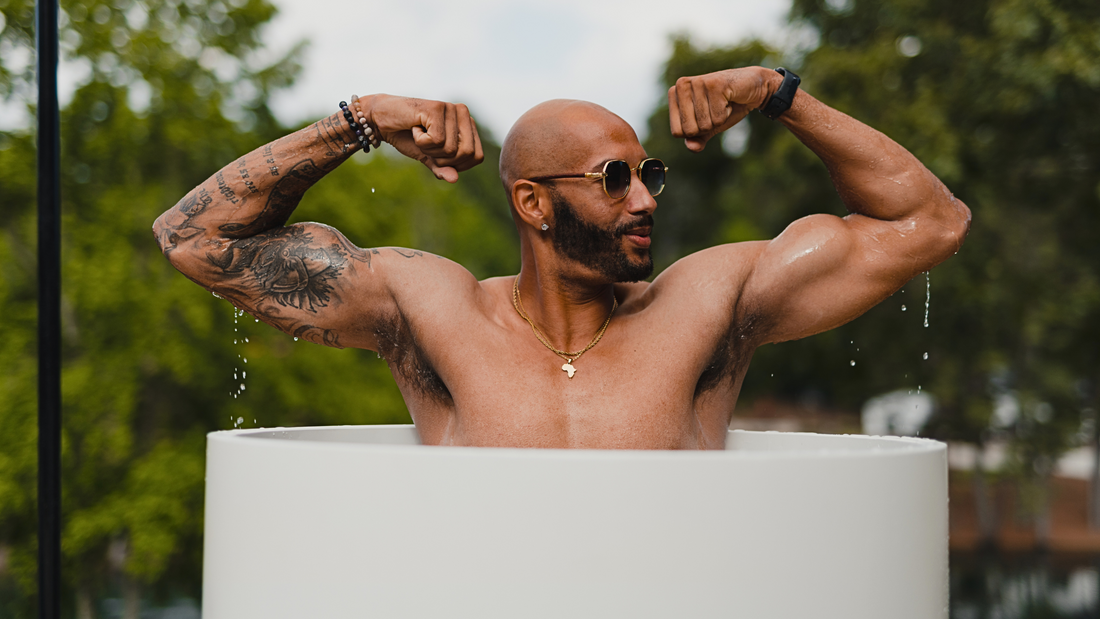
Cold Plunge Dos and Don’ts: A Guide to Ice Bath Therapy
Share
Ice Bath Dos and Don'ts: Maximizing Benefits While Ensuring Safety
Ice baths have gained popularity for their touted benefits in muscle recovery and overall well-being. At The Cold Life, we understand the significance of utilizing ice baths effectively and the benefits of cold exposure. Here's some of the essential dos and don'ts for maximizing the advantages of ice baths while prioritizing safety and optimizing your recovery process.
Understanding Ice Baths
Ice baths, also known as cold water immersion or cold plunging, involves submerging the body in cold water, typically between 50 to 59 degrees Fahrenheit (10 to 15 degrees Celsius). The exposure to these cold temperatures is believed to reduce inflammation, ease muscle soreness, and accelerate recovery post-exercise.
Cold Therapy Benefits
Cold therapy helps in Muscle Recovery by reducing muscle inflammation and potentially aiding in faster recovery from intense workouts or sports activities. It Alleviates Pain by numbing nerve endings and reducing swelling, offering relief from soreness. Enhanced Circulation through alternating between cold water and warm water promotes better blood flow, aiding in overall recovery. It also stimulates the burning of Brown Fat, contributing to increased metabolism and weight management. Beyond physical benefits, ice baths can improve Sleep Quality and reduce Inflammation in the body, leading to better recovery.
8 Ice Bath Dos: Best Practices for Effective Ice Baths
- Gradual Temperature Adjustment: Start with water temperatures around 50-59 degrees to allow your body to acclimate gradually. Avoid sudden plunges into extremely cold water to prevent shock.
- Time Management: Limit ice bath sessions to 10-15 minutes initially, gradually increasing duration as tolerance builds. Overexposure to cold water can lead to adverse effects.
- Post-Workout Timing: Opt for ice baths within 30 minutes to an hour after intense physical activity. This timing maximizes the benefits for muscle recovery.
- Hydration and Warm Attire: Stay hydrated before and after the ice bath. Additionally, wear warm clothing post-immersion to retain body heat.
- Monitoring Reactions: Listen to your body and be attentive to individual reactions and existing medical conditions. If discomfort or adverse effects persist, discontinue ice baths and consult a healthcare professional.
- Proper Cooling Down: Allow the body to cool down naturally before immersion. Avoid immediate jumping into an ice bath post-exercise.
- Gentle Movements: Engage in gentle movements while in the ice bath to stimulate circulation without causing strain.
- Gradual Exit: When exiting the ice bath, do it slowly to prevent sudden temperature changes in the body.
8 Ice Bath Don'ts: Avoiding Pitfalls in Ice Bathing
- Extreme Temperatures: Avoid extremely cold water below 40 degrees, as it can cause hypothermia and cold shock to the body.
- Prolonged Immersion: Extended sessions exceeding 20 minutes can lead to potential health risks, including nerve damage and skin-related issues.
- Immediate Submersion Post-Exercise: Refrain from jumping directly into an ice bath immediately after intense exercise.
- Overlooking Hydration: Ensure adequate hydration before and after the ice bath to prevent dehydration.
- Skipping Warm Attire: Neglecting warm clothing post-immersion can lead to rapid loss of body heat.
- Ignoring Individual Reactions: Pay attention to your body's signals. Discontinue if discomfort persists.
- Abrupt Exits: Avoid sudden exits from the ice bath, as it can cause temperature shocks to the body.
- Forgetting Gradual Progression: Don’t rapidly increase duration or coldness; progression should be gradual to prevent adverse effects.
Conclusion
Whether you’re new to cold therapy or a seasoned veteran mastering the dos and don'ts of cold water immersion is crucial for reaping the benefits while safeguarding against potential risks. By following these guidelines, you can harness the benefits of cold water for enhanced recovery without compromising your well-being.







